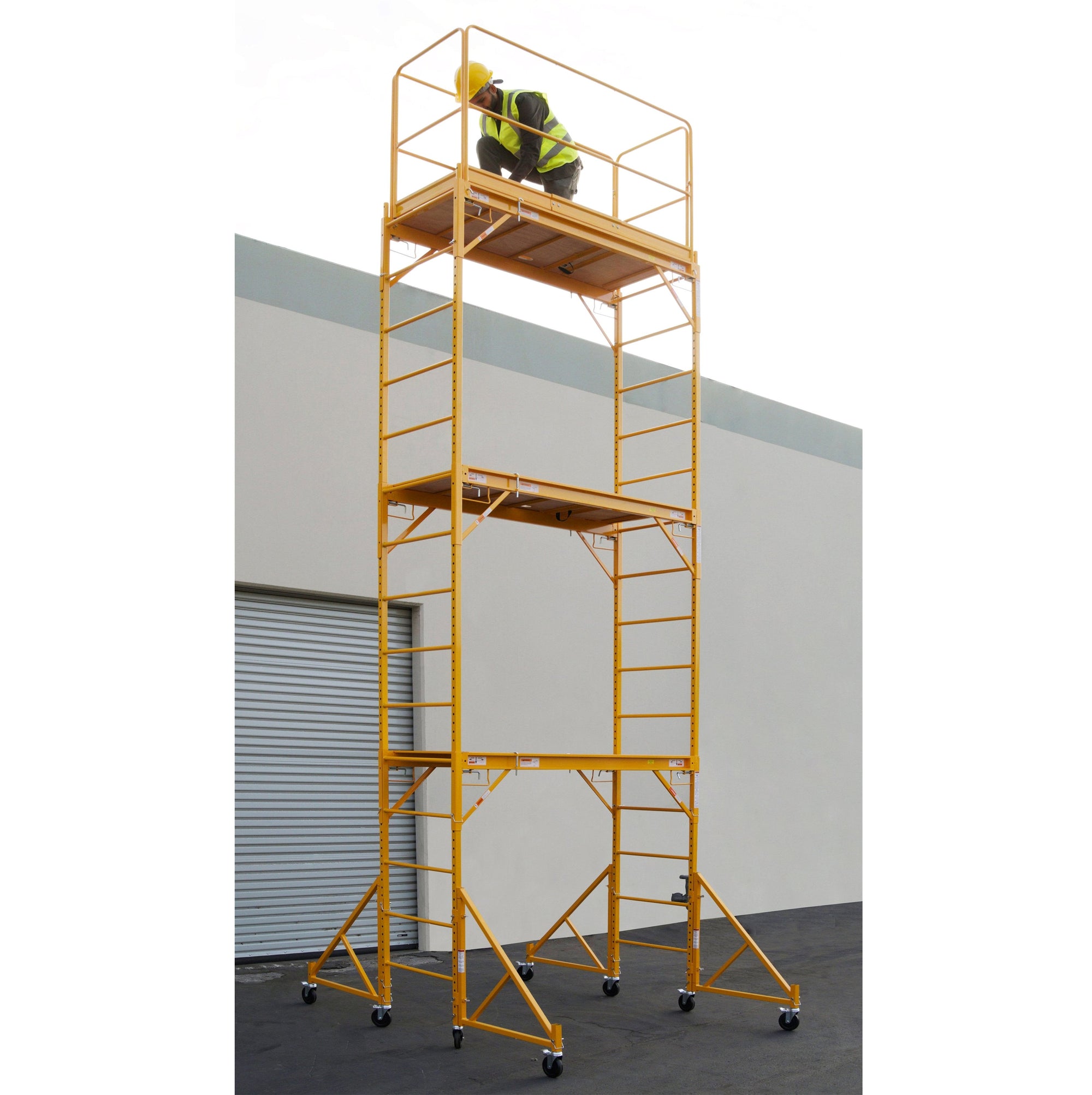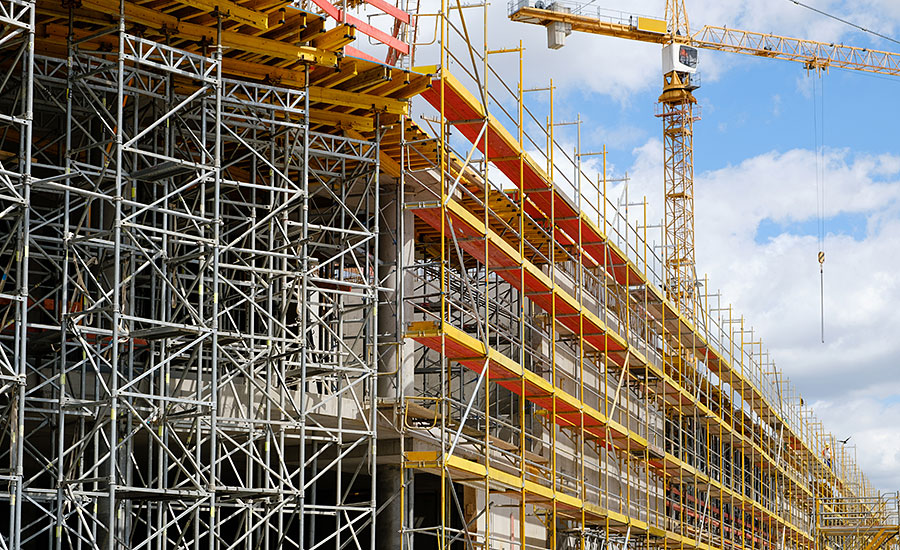Temporary Roof Scaffolding for Your Construction or Renovation Project
A Comprehensive Overview to the Important Attributes of Scaffolding in Modern Construction
The landscape of modern-day construction progressively relies upon effective scaffolding systems that focus on performance, safety, and development. As projects grow in intricacy, understanding the vital functions of scaffolding comes to be critical for ensuring worker safety and enhancing job timelines. This guide checks out different kinds of scaffolding, highlights crucial safety and security attributes, and checks out product advancements that add to efficiency and sustainability. The effects of these elements prolong much beyond plain building practices, motivating a better look at just how they influence overall project success and worker health.
Kinds Of Scaffolding
Although scaffolding systems can vary commonly in design and application, they normally come under several distinctive categories that accommodate different building and construction demands - Scaffolding. The most common kinds include supported scaffolding, put on hold scaffolding, and rolling scaffolding
Sustained scaffolding contains systems sustained by a structure of poles, which give a secure and raised functioning surface. This kind is generally used for jobs that call for significant altitude, such as bricklaying or external painting.
Suspended scaffolding, alternatively, is made use of for tasks calling for accessibility to high altitudes, such as cleansing or fixing structure exteriors. This system hangs from an additional framework or a roof, permitting employees to reduced or increase the platform as needed.
Rolling scaffolding features wheels that allow for easy mobility across a job website. It is particularly beneficial for tasks that call for frequent relocation, such as indoor work in huge rooms.
Each kind of scaffolding is made with certain applications in mind, making certain that building and construction tasks can be executed effectively and efficiently. Understanding these categories is crucial for picking the ideal scaffolding system to satisfy both job requirements and website problems.
Key Safety Attributes
Security is critical in scaffolding systems, as the potential threats connected with working at elevations can cause major crashes otherwise correctly taken care of. Secret safety attributes are important to guarantee the well-being of employees and the integrity of the building and construction website.
First and foremost, guardrails are crucial. These obstacles provide a physical guard against drops, considerably lowering the danger of serious injuries. In addition, toe boards are typically made use of to stop devices and materials from dropping off the scaffold, safeguarding employees below.
An additional important element is making use of non-slip surfaces on systems. This feature improves grasp, especially in unfavorable climate condition, thus reducing the probability of slides and falls. Furthermore, gain access to ladders need to be securely positioned to assist in secure entry and departure from the scaffold.
Regular assessments and upkeep of scaffolding systems are additionally vital. These assessments make certain that all components are in good condition and working appropriately, dealing with any type of wear or damage immediately.
Last but not least, correct training for all employees associated with scaffolding operations is important to make sure that they comprehend safety and security methods and can identify prospective dangers. Scaffolding. Jointly, these functions develop a more secure working atmosphere and substantially minimize risks related to scaffolding
Material Advancements
Improvements in product science have actually considerably affected the scaffolding market, improving both safety and security and efficiency in modern-day construction. The introduction of high-strength steel and light weight aluminum alloys has reinvented conventional scaffolding systems.
In addition, innovative composite products, such as fiberglass-reinforced plastics, have actually become sensible alternatives. These products are resistant to deterioration and ecological destruction, therefore prolonging the lifespan of scaffolding systems, especially in harsh weather. Using such products adds to lower maintenance costs and ensures consistent efficiency with time.


Design Factors To Consider
Considering the complexities of modern-day construction projects, effective scaffolding design is vital to making certain both functionality and security. Style considerations need to encompass various aspects, including lots capability, elevation, and the certain demands of the building site. Each project offers distinct difficulties, requiring a flexible approach to scaffolding systems that can adapt to differing conditions.
Architectural integrity is crucial; therefore, designers need to determine the lots that the scaffolding will certainly sustain, consisting of employees, materials, and tools. The choice of products plays a critical function in making certain the scaffolding can endure these tons while continuing to be lightweight and long lasting. In addition, the style has to enable for very easy gain access to and egress, promoting the smooth you could try these out motion of employees and products.
Safety and security functions, such as guardrails and non-slip surface areas, should be incorporated to minimize my review here dangers of mishaps. Furthermore, the layout has to take into consideration the surrounding setting, including adjacent structures and prospective hazards. By resolving these design considerations, building firms can boost the efficiency of scaffolding systems and advertise a safer working atmosphere, inevitably adding to the total success of the job.
Maintenance and Evaluations
The performance of scaffolding systems extends past first layout and application; ongoing maintenance and regular inspections are crucial to guaranteeing their continued performance and safety and security throughout the period of a task. Normal examinations should be performed by qualified personnel to determine any type of signs of wear, damage, or instability that might compromise the integrity of the scaffolding.
Upkeep procedures should include routine checks of structural components, such as frames, installations, and slabs, guaranteeing that all aspects continue to be totally free and secure from deterioration or other wear and tear. Furthermore, the performance of safety features, such as guardrails and toe boards, have to be examined to guarantee conformity with safety and security laws.
Documents of all evaluations and upkeep tasks is critical for accountability and regulatory conformity. An organized approach to record-keeping not only help in tracking the condition of the scaffolding but likewise supplies required proof in case of an incident.
Ultimately, establishing a detailed upkeep and assessment schedule will significantly lower the danger of mishaps and enhance the overall safety and security of the construction site. By prioritizing these practices, building and construction website here supervisors can guard workers and copyright the task's stability.

Conclusion
To conclude, the important functions of scaffolding in contemporary building incorporate a range of critical components, consisting of varied kinds, crucial security devices, material innovations, and thoughtful style factors to consider. Emphasizing safety and security via guardrails and non-slip surfaces, alongside developments in materials like high-strength steel, improves both performance and sustainability. Moreover, routine upkeep and examinations are important for making sure structural integrity and safety on construction sites, eventually helping with effective task execution and promoting the health of workers.
The landscape of modern construction progressively relies on reliable scaffolding systems that focus on safety, technology, and performance.Innovations in product science have considerably influenced the scaffolding industry, boosting both security and performance in modern building and construction. In general, these product developments not just boost the performance and security of scaffolding systems yet additionally line up with the market's push in the direction of sustainability, as several modern materials are made to be more environmentally pleasant.
Taking into consideration the intricacies of modern building projects, effective scaffolding design is critical to ensuring both functionality and security.In final thought, the essential attributes of scaffolding in modern building include an array of crucial components, consisting of varied kinds, crucial safety and security mechanisms, product technologies, and thoughtful design factors to consider.